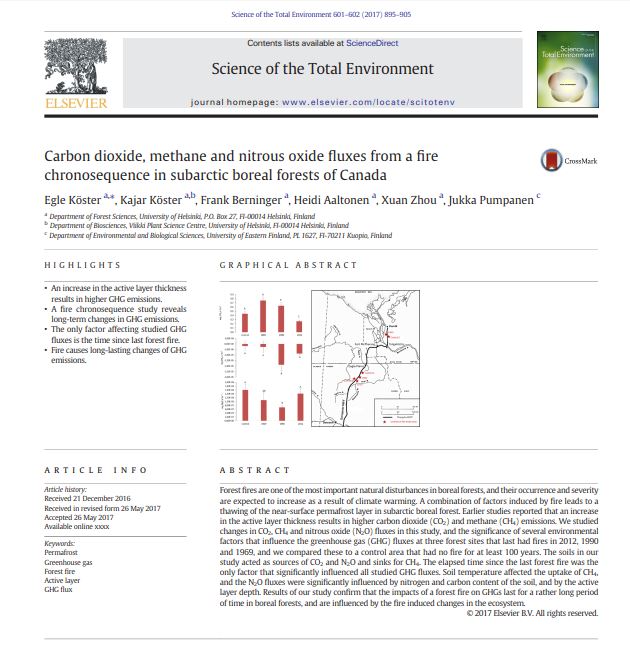New paper by Köster et al., (2017) is dealing with carbon dioxide (CO2), methane (CH4) and nitrous oxide (N2O) fluxes from a fire chronosequence in subarctic boreal forests of Canada. The long-term effects of fire on the fluxes of three main GHGs in boreal coniferous forest areas with underlying permafrost were investigated. Fire chronosequence consists of areas where the last fires occurred in years 2012, 1990, and 1969, and results from these areas were compared with control area that had no fire for at least 100 years.
Our results revealed that the only factor that influenced all measured GHGs was the time passed from last the forest fire. We also found that the impacts of a forest fire on GHGs of our studied areas lasted for a rather long period of time. Soil CO2 efflux decreased after the fire, but increased thereafter for several decades and appeared to reach its peak about 40–45 years later.
Subarctic boreal forests acted as sinks of CH4 in our study, but changes in CH4 fluxes lasted for a shorter period of time as the uptake of CH4 did not differ between the area burned in 1969 and the control area. Increases in active layer depth, in our areas, did not lead to large increases in CH4 fluxes.
A slight decrease in N2O emission was observed in the comparison of different fire age classes, and factors that appeared to influence fluxes of N2O were C and N contents of the soil, and also the depth of the active layer.
